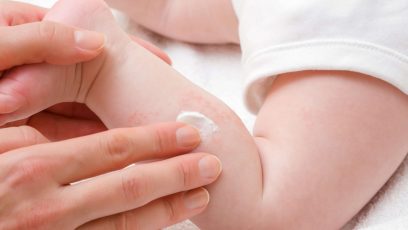Is excessive hand hygiene during the COVID-19 pandemic causing an increase in hand eczema in Denmark?
Our globe has changed dramatically since the beginning of the COVID-19 pandemic. The novel corona virus disease poses enormous challenges for society as a whole, and for all health care workers, including dermatologists.1
As the virus is highly contagious via respiratory transmission and via contact with contaminated surfaces, community transmission can be decreased through the practice of frequent and proper hand hygiene. Adequate hand hygiene is one of the major preventive measures to control the COVID-19 pandemic.2 Though, frequent hand washing implies a prolonged exposure to water and other chemical and physical agents.
Denmark is the first European country to gradually ‘reopen’ society after a ‘lockdown’. In Denmark the population is requested to follow national guidelines about proper handwash. These guidelines from the national health authorities suggest very frequent handwash (every second hour) and do not recognize the importance of applying emollients/cream. Especially, schools and child-day care centers are following the guidelines strictly. As a result, many general practitioners and dermatologists have reported an increased incidence, especially in the youngest part of the population, of severe hand eczema (figure 1).
Fortunately, the authorities have just changed their recommendation for hand wash, now acknowledging the importance of frequent application of cream/emollients. Studies with questionnaires are now being send to school children to gather information about the scale of this problem.

Figure 1: A nine-year old patient without any previous medical history developed severe hand eczema after frequent handwash during the COVID-19 pandemic. (Photo: Carsten Sauer Mikkelsen).
Discussion
Almost one out of five children have a sensitive skin and are at high risk of developing hand eczema due to atopic disease.
Excessive hand hygiene due to the COVID-19 pandemic may lead to an increased number of cases of hand eczema. The frequent disinfection and handwashing procedures may induce several pathophysiologic changes such as disruption of the epidermal barrier, impairment of keratinocytes with subsequent release of proinflammatory cytokines, activation of the cutaneous immune system, and delayed-type hypersensitivity reactions. Frequent hand wash may induce various changes in skin texture ranging from the development of cutaneous xerosis to irritant contact dermatitis (ICD) or, even allergic contact dermatitis.
Prolonged skin exposure to water creates extensive swelling of stratum corneum and disruption in the ultrastructure of the intercellular lipids and increases the skin’s permeability and sensitivity to chemical or physical irritants.3 In addition, wearing of protective gloves can generate excessive sweating and create a humid environment. This might further increase the inflammatory response induced by irritants.
Soaps, solvents, surfactants, and detergents are weak irritants and are usually well tolerated. Nevertheless, repeated exposure to these substances can lead to chronic ICD, mainly due to their capacity to remove skin surface lipids, damage skin proteins, denature epidermal keratin, and even induce alteration of the cell membrane of keratinocytes.4 Furthermore, patients with a family or personal history of atopic dermatitis have a chronically dysfunctional skin barrier that increases their sensitivity to skin irritants.5,6
Conclusion:
Although hand hygiene is of utmost importance to protect against COVID-19, the public should be made aware of proper and rational hand hygiene and be warned against excessive hand hygiene. Cream/emollients should be applied frequently to replenish the lost skin barrier lipids and creams should be applied on dry skin to prevent any trapping of skin sanitizers. Besides the possibility of developing a disabling, severe chronic hand eczema it is also feared that the skin damage may create an alternative route of entry for COVID-19.
-
1. Singh M, Pawar M, Bothra A, Choudhary N. Overzealous hand hygiene during COVID 19 pandemic causing increased incidence of hand eczema among general population. J Am Acad Dermatol. 2020 Apr 16. doi: 10.1016/j.jaad.2020.04.047 2. WHO Guidelines on Hand Hygiene in Health Care: First Global Patient Safety Challenge Clean Care Is Safer Care. Geneva: World Health Organization; 2009. 3. Warner RR, Boissy YL, Lilly NA, et al.: Water disrupts stratum corneum lipid lamellae: damage is similar to surfactants. J Invest Dermatol. 1999, 113:960-966. 4. Khosrowpour Z, Ahmad Nasrollahi S, Ayatollahi A, Samadi A, Firooz A: Effects of four soaps on skin trans-epidermal water loss and erythema index. J Cosmet Dermatol. 2019, 18:857-861 5. Cavanagh G, Wambier C. Rational hand hygiene during COVID-19 pandemic [published online ahead of print, 2020 Apr 5]. J Am Acad Dermatol. 2020;S0190- 9622(20)30513-2. doi:10.1016/j.jaad.2020.03.090 6. Hamming I, Timens W, Bulthuis ML, Lely AT, Navis G, van Goor H. Tissue distribution of ACE2 protein, the functional receptor for SARS coronavirus. A first step in understanding SARS pathogenesis. J Pathol. 2004;203(2):631–637. doi:10.1002/path.1570
Brænder du for at skrive?
Vil du gerne dele din forskning eller dine kliniske erfaringer med dine kollegaer inden for netop dit speciale? Har du en ide til en artikel, som du gerne vil udgive hos os? Send redaktionen en mail på redaktion@bpno.dk
Send mail til redaktionen









